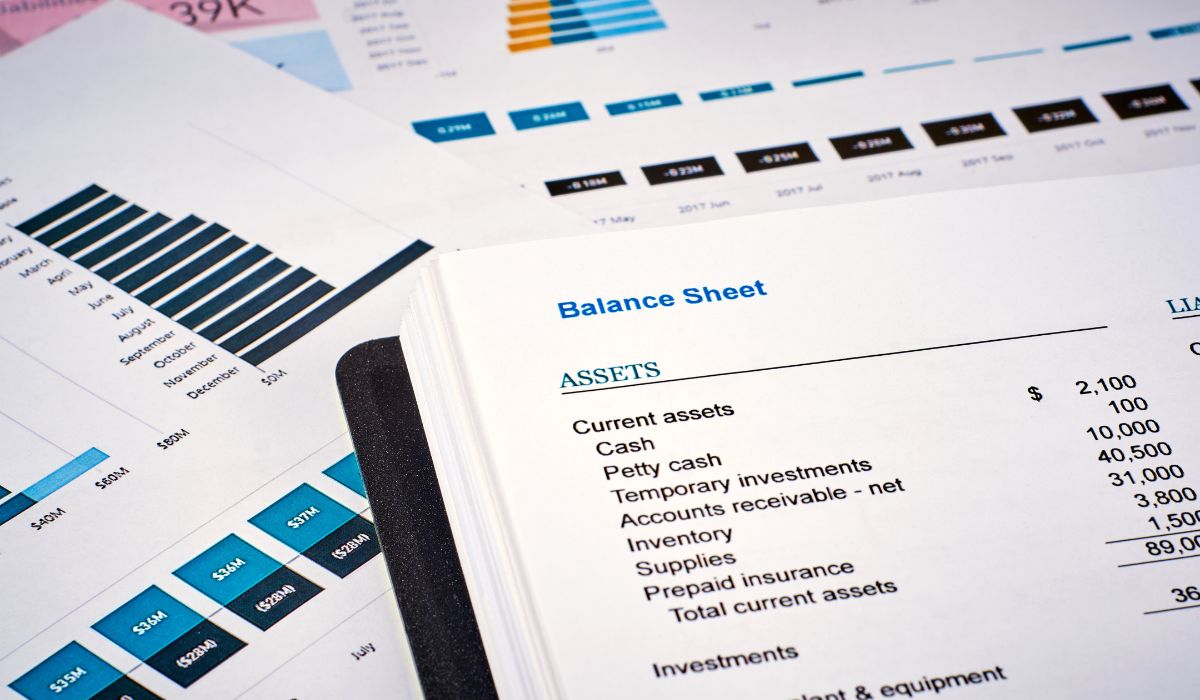In the wine industry, balance sheets are crucial financial documents that provide valuable insights into the financial health of a winery. These documents contain key performance indicators (KPIs) that help winery owners and managers make important business decisions.
Some of the most important KPIs to look out for in a winery’s balance sheet include inventory turnover ratio, accounts receivable turnover ratio, and return on assets. These metrics can help determine the efficiency of the winery’s operations, the effectiveness of their sales and collection processes, and the overall profitability of the business.
It is important for wineries to regularly review and analyze their balance sheets to ensure that their financials are in order and to identify any areas that may need improvement. For assistance with managing and interpreting your winery’s balance sheet, consider outsourcing your bookkeeping services to a trusted company like Protea Financial. We have the expertise and experience to help you make the most of your financial data and make informed decisions for the success of your winery.
Key Metrics to Evaluate the Financial Health of Wineries
When it comes to evaluating the financial health of wineries, there are several key metrics that must be taken into consideration.
- First and foremost, wineries must ensure that they are maintaining a positive cash flow. This means that their operating cash flow should be higher than their capital expenditures, allowing them to invest in future growth and expansion.
- Another important metric is the debt-to-equity ratio, which measures the level of debt a winery has compared to its equity. A lower ratio indicates a healthier financial position.
- Wineries should also closely monitor their gross profit margin, which is the percentage of revenue that is left after deducting the cost of goods sold. This metric can help determine the efficiency of operations and identify areas for improvement.
- Additionally, return on assets and return on equity are important indicators of a winery’s profitability and efficiency. These metrics measure the return on investment for both assets and equity, respectively.
- Lastly, it is crucial for wineries to regularly analyze their inventory turnover ratio, which measures how quickly a winery can sell its inventory. A higher ratio indicates more efficient inventory management.
By closely monitoring and evaluating these key metrics, wineries can ensure that their financial documents are in order and make informed decisions for future growth and success. For assistance with bookkeeping services, contact Protea Financial today.
Understanding Liquidity Ratios: A Snapshot of Short-Term Finances
For a winery, liquidity ratios are important. They show if the business can cover short-term costs like debt and expenses.
There are three ratios to consider: the current ratio, quick ratio, and cash ratio.
- The current ratio looks at assets versus liabilities. A high ratio indicates good coverage for debts.
- The quick ratio, also called the acid-test ratio, leaves out inventory from assets.
- The cash ratio focuses on cash reserves, showing how well they cover debts.
These ratios help folks like investors understand a winery’s financial status, helping them decide if it’s worth partnering up. If managing finances is tricky, Protea Financial can help keep things organized with their outsourced bookkeeping services.
Profitability Ratios: Evaluating Winery Performance
When it comes to evaluating the performance of a winery, profitability ratios are a key metric to look at. These ratios provide insight into the financial health and success of a winery and can help identify areas for improvement.
Some important profitability ratios for wineries include gross profit margin, operating profit margin, and net profit margin. These ratios show the percentage of sales that are turned into profits and can be compared to industry benchmarks to see how the winery is performing compared to its competitors.
It’s also important to analyze return on assets and return on equity, which show how effectively the company is using its assets and shareholder investments to generate profits. By regularly monitoring these profitability ratios, wineries can make informed decisions to improve their financial performance.
For help with managing and interpreting your winery’s balance sheet, consider outsourcing bookkeeping services to a trusted company like Protea Financial. We have the expertise and experience to ensure your financial documents are in order and help your winery thrive.

Efficiency Ratios: Optimizing Resource Utilization
When it comes to running a successful winery, it is crucial to have a strong understanding of your financial standing. One important aspect of this is tracking and analyzing efficiency ratios, which measure how well a company utilizes its resources to generate revenue. This includes metrics such as inventory turnover, asset turnover, and accounts receivable turnover.
By carefully monitoring these ratios, wineries can identify areas where they may be overspending or underutilizing resources and make necessary adjustments to improve their overall efficiency. This is where outsourced bookkeeping services, like those offered by Protea Financial, can be extremely beneficial.
By having experts handle their financial documents, wineries can ensure accurate and timely reporting, allowing them to make informed decisions and optimize their resource utilization. With a thorough understanding of their efficiency ratios, wineries can maintain a strong financial standing and continue producing high-quality wines.
Debt Management Ratios: Managing Financial Obligations
One of the most important aspects of managing a winery’s finances is keeping track of debt. This can include loans, credit card balances, and any other financial obligations that the winery may have.
Debt management ratios are key metrics that can help wineries determine how well they are managing their financial obligations. Two important ratios to look at are the debt-to-equity ratio and the debt-to-assets ratio.
- The debt-to-equity ratio measures the amount of debt a winery has compared to its equity or ownership interest. A high ratio may indicate that the winery is relying heavily on debt to finance its operations, which could be risky. On the other hand, a low ratio may mean the winery is using more of its own funds to cover expenses.
- The debt-to-assets ratio, on the other hand, measures the amount of debt a winery has compared to its total assets. This ratio can help determine the level of leverage a winery has, and a high ratio may indicate that the winery is at risk of defaulting on its debt.
When wineries carefully monitor these ratios, they can ensure they are effectively managing their financial obligations and maintaining a healthy balance sheet. For assistance with bookkeeping and financial management, contact Protea Financial today. Our outsourced bookkeeping services can help wineries like yours stay on top of their financial documents and make informed decisions for their business.
Tips on Interpretations of Key Metrics for Wineries
In order to evaluate a winery’s performance, several key metrics demand attention. The most critical metric is profitability. This can be assessed through gross profit margin and net profit margin. These figures reveal the financial wellness of the winery and its profit-making potential.
Metrics like inventory turnover and accounts receivable turnover give clues about a winery’s operational efficiency and asset management. Short-term financial steadiness can be gauged via liquidity ratios, such as the current ratio and quick ratio.
Debt ratios including debt-to-equity and interest coverage ratios reveal a winery’s financial resilience and debt management capacity. Understanding these key metrics is vital for wineries to maintain their finances and make calculated business decisions.
Protea Financial is always ready to help manage your winery’s finances and analyze. We specialize in making your winery financials accurate and easy for you to make decisions based on their data.
Vintage Inventory: Not All Assets Are Equal
Beyond the basics of asset-liability comparisons, one overlooked but essential aspect of winery balance sheets is vintage-specific inventory accounting. Unlike typical perishable goods, wine can sit for years before sale—bottled in barrels, aging in warehouses, quietly tying up capital. Not factoring in the aging cycle or differentiating between finished goods and work-in-progress skews liquidity ratios and distorts true financial health. A robust tracking system that breaks inventory down by vintage and aging stage can shed light on which assets are truly liquid versus those locked in time.
CapEx vs. Depreciation: The Silent Balance Sheet Tug-of-War
Another nuance? Capital expenditures versus depreciation rates. Wineries often invest heavily in land, fermentation tanks, and oak barrels, but those assets depreciate at different rates. If CapEx isn’t keeping pace with depreciation, that shiny equipment you bought five years ago might now be dragging down your asset base. Monitoring the balance between reinvestment and depreciation tells a deeper story about sustainability and forward momentum.

Owner’s Equity: Growth Mode or Cash-Out Strategy?
Lastly, dig into the owner’s equity behavior. Is profit being reinvested into operations or withdrawn through distributions? That simple line item can say a lot. Aggressive reinvestment signals growth-mode; steady distributions suggest stability—or stagnation. For investors or partners, understanding this balance can offer clues about a winery’s long-term intentions, risk appetite, and overall financial strategy.
Choosing Outsourced Bookkeeping Services for Wineries
As a winery owner, you know how important it is to keep your financial documents in order. This is why choosing the right outsourced bookkeeping services is crucial for your business.
At Protea Financial, we understand the unique needs of wineries and offer specialized bookkeeping services to help you stay on top of your finances. Our team of experts will analyze your balance sheets and key performance indicators (KPIs) to ensure that everything is in order and your winery is financially healthy.
From tracking and inventory to managing compliance and payroll, we have the knowledge and experience to handle all aspects of your bookkeeping. Let us take care of the financial side of your winery so you can focus on what you do best – making exceptional wines.
Let Protea Financial Help You Track the Right Metrics for Your Business
By paying attention to key metrics such as inventory turnover, debt-to-equity ratio, and cash flow, wineries can make informed decisions to improve their profitability and sustainability. However, keeping track of these metrics can be a daunting task for winery owners and managers. That’s where Protea Financial comes in.
Our outsourced bookkeeping team knows the wine industry and can help you stay on top of your financial documents, giving you more time to focus on making great wine. Don’t let your winery’s financials fall through the cracks.
Contact Protea Financial today and let us help you crunch the numbers and keep your business thriving. Cheers to a successful and profitable future!



